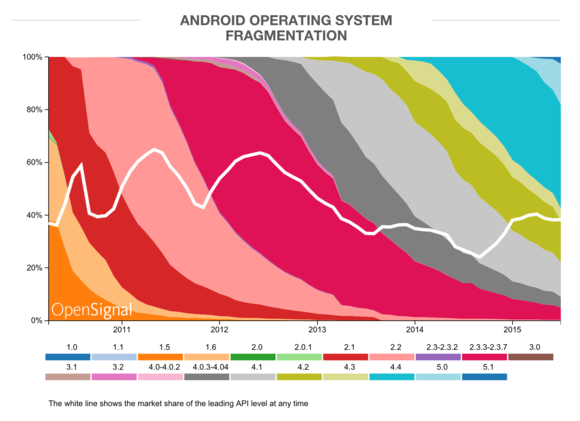There are now at least 24,000 different Android devices in the wild.
This is among the surprising findings from the annual OpenSignal Android fragmentation report, which compiles hardware software data to get a broad picture of the Android ecosystem.
OpenSignal gets the data by analyzing the most recent 682,000 downloads of its mobile app. It then mines the data to determine version of Android the devices are running their various general hardware specifications.
OpenSignal sticks with the 682,000 figure for a more direct comparison from one year to the next. The 2014 report indicated 18,796 different models running Android—this year the number is 24,093. Samsung has the biggest block on the chart, with nearly 38 percent market share.
In a blog post to accompany the report, OpenSignal noted some other trends among Android devices. Screens are (not surprisingly) getting bigger, but so is the amount of RAM, number of C cores, the prevalence of NFC (though OpenSignal notes it’s not accelerating as quickly as other technologies). As mobile devices become the primary computer for so many people, expect the push for better specs to continue.


The most popular version of Android typically hovers around 40 percent, according to OpenSignal’s data.
However, operating system fragmentation remains a problem, as the report indicates that the most popular version of Android usually doesn’t get higher than about 40 percent market share. Fragmentation impacts those who want the latest features on their device developers who have to build compatibility with multiple versions of Android.
y this matters: Android fragmentation is still a problem that plagues the ecosystem, especially with the recent report that nine months after its launch, llipop is only on 18 percent of Android devices. However, the upside is the amount of choice you have in buying the type of device you want. And as Android pushes further into emerging markets, the ability to get a smartphone for an inexpensive price is finally an opportunity for many millions of new consumers.


















